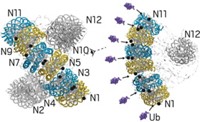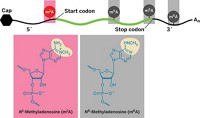Advertisement
Grab your lab coat. Let's get started
Welcome!
Welcome!
Create an account below to get 6 C&EN articles per month, receive newsletters and more - all free.
It seems this is your first time logging in online. Please enter the following information to continue.
As an ACS member you automatically get access to this site. All we need is few more details to create your reading experience.
Not you? Sign in with a different account.
Not you? Sign in with a different account.
ERROR 1
ERROR 1
ERROR 2
ERROR 2
ERROR 2
ERROR 2
ERROR 2
Password and Confirm password must match.
If you have an ACS member number, please enter it here so we can link this account to your membership. (optional)
ERROR 2
ACS values your privacy. By submitting your information, you are gaining access to C&EN and subscribing to our weekly newsletter. We use the information you provide to make your reading experience better, and we will never sell your data to third party members.
Biological Chemistry
RNA Epigenetic Mechanism Revealed
m6A modification induces RNA shape change that promotes protein binding
by Stu Borman
March 2, 2015
| A version of this story appeared in
Volume 93, Issue 9
The biological effects of epigenetic changes to genomic DNA, such as methylation and histone modification, have been widely studied. Similar changes to mRNAs also affect biological processes but are not yet as well understood. The most common epigenetic modification to RNA is the methylation of adenosine nucleotides to form N6-methyladenosine (m6A) groups. Researchers now report one way this modification works—by changing the conformation of mRNA in a manner that allows an RNA-binding protein called HNRNPC to bind with higher affinity. The work was carried out by Marc Parisien, now at McGill University; Tao Pan at the University of Chicago; and coworkers (Nature 2015, DOI: 10.1038/nature14234). They show that when m6A binds to one site on folded mRNA, a five-uridine sequence opposite the binding site changes shape. The shape change helps HNRNPC bind more avidly—an interaction that has major effects on mRNA function. They found more than 39,000 mRNAs in which this m6A switching action occurs. “Besides HNRNPC, m6A-switches may regulate the function of many other RNA-binding proteins,” the researchers predict.






Join the conversation
Contact the reporter
Submit a Letter to the Editor for publication
Engage with us on Twitter